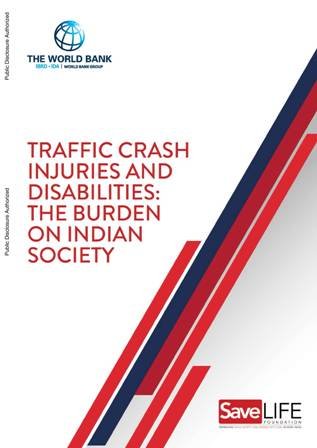India accounts for 11% of global death in road accidents: World Bank Report
- The World Bank has released a comprehensive report titled ‘Traffic Crash Injuries and Disabilities: The Burden on Indian Society’ in association with the SaveLife Foundation, an independent, non-profit, non-governmental organization committed to improving road safety and emergency medical care across India.
- The report was released by Union transport minister, Nitin Gadkari, on February 13, 2021. The report is based on the data for the year 2019.
- The World Bank-SaveLife Foundation report highlights the disproportionate impact of a road crash on poor households that pushes them into poverty and debt.
- It sheds light on the links between road crashes, poverty, inequality, and vulnerable road users in India.
Key takeaways from the report
- India has only 1 percent of the world’s total vehicles. However, the country accounts for 11 percent of the global death due to road accidents. This is the highest death rate in the world because of road accident.
- 70 percent of the fatalities are the age group of 18 to 45 years, impacting the country as a whole.
- Road crash deaths among poor households accounted for 44 percent in rural areas compared to 11.6 percent in urban areas
- In India, Low-income household (LIH) spends about 7 months of its income, while a high household income (HIH) spends less than a month’s salary in post-road crash care.
- More than 75 percent of poor households in India reported a decline in their income as a result of a road traffic crash.
- The study interviewed around 2,500 respondents, including 1,647 respondents from low-income households, 432 from high-income households and 420 truck drivers in the four selected states (Uttar Pradesh and Bihar representing Low-Capacity States and Tamil Nadu and Maharashtra representing High-Capacity States) across urban and rural areas.



